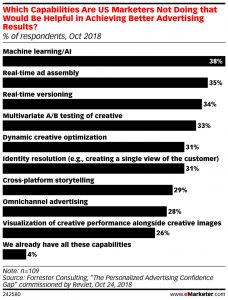Staying on top of your marketing ROI is key to ensuring the success of your marketing program. Ignore these red flags and you could be leaving money on the table. Here are the critical metrics you need to be tracking.
Many marketers take an “if it isn’t broke, don’t fix it” view of marketing ROI. But, what do you do when your marketing campaigns aren’t giving you the biggest sales bang for your buck?
The key to righting a downward marketing trend is in keeping your pulse on your marketing spend-to-conversion rates ratio at all times.
The problem is most marketers don’t have formal metrics in place to know when their marketing is in trouble. And this is one area you don’t want to be left behind in.
Based on my 25+ years in direct response, I’ve put together a comprehensive diagnostic checklist that you can download here for free. This checklist will help you pinpoint exactly where your marketing program can be optimized.
Want to take your marketing to the next level?
Then you need one thing: data-driven metrics.
That’s why direct response marketers have an unfair advantage over their markets. They invest (and actually use) tools to track every ad placement, every click, and every sale.
But marketer beware… not all data is “good” data to collect. You need to know what data drives the greatest insight into your marketing machine.
Don’t be fooled with vanity metrics.
Any metric not directly tied to generating sales, isn’t worth tracking— at least not aggressively.

For example, counting social media followers, post shares, even website visitors aren’t important unless you can quantify how they translate into moving the prospect into a paying customer.
Track what promotes a sale and details the customer experience.
There are three key performance indicators you must track to evaluate the effectiveness of your marketing.
- Click through rates (CTR). You need to quantify if your marketing messages are resonating with your target audience. Are your campaigns getting them to take action and click? And monitoring your CTR is the most efficient way to quickly identify which campaigns are worth continuing or need to be scrapped completely.
- Sales conversion rates. What do your customers do once they click to a landing page or long-form promotion? If your CTR is high but your conversion rate is low, then there is a fundamental marketing breakdown that you need to address. In some cases, it is the offer that needs work or the value/benefits of your product or services aren’t clearly communicated to move customers to want to buy.
- Page loading times. Often in marketing, there is a digital or technical issue that prevents customers from buying. If your user experience is inconvenient, confusing, or hard to navigate, then your sales will be inevitably impacted. No matter how compelling your space advertisements or your landing pages are, if customers hit a technical roadblock at any point, then your conversion rates will suffer.
Stay vigilant of your marketing ROI
The companies that master marketing are those who know how to track and analyze how their campaigns are doing at all times. If you can’t immediately pinpoint when any single sales indicator dips below critical levels, then your marketing campaigns could be spending “empty” dollars.
A/B Testing is King
A marketing campaign can “seem” like it is doing great, but without constantly testing and fine tuning your approach, then you could be leaving major money on the table.

Every marketing effort can be done better— guaranteed. When your marketing fatigues you have to be ten steps ahead with the next thing to test and evolve your marketing strategies as a result. Static marketing will kill your sales. Stay flexible and always be ready to go back to the marketing drawing board.
